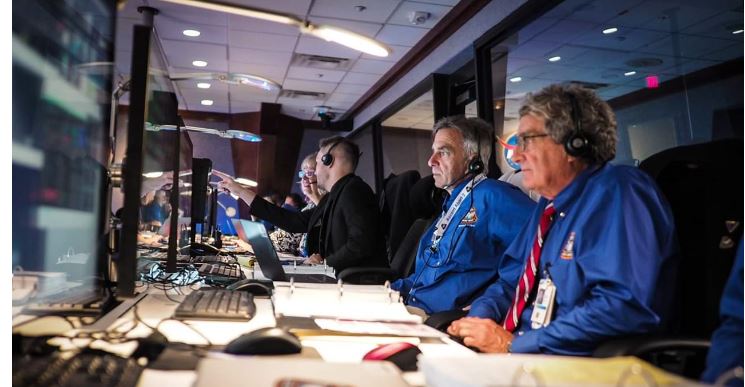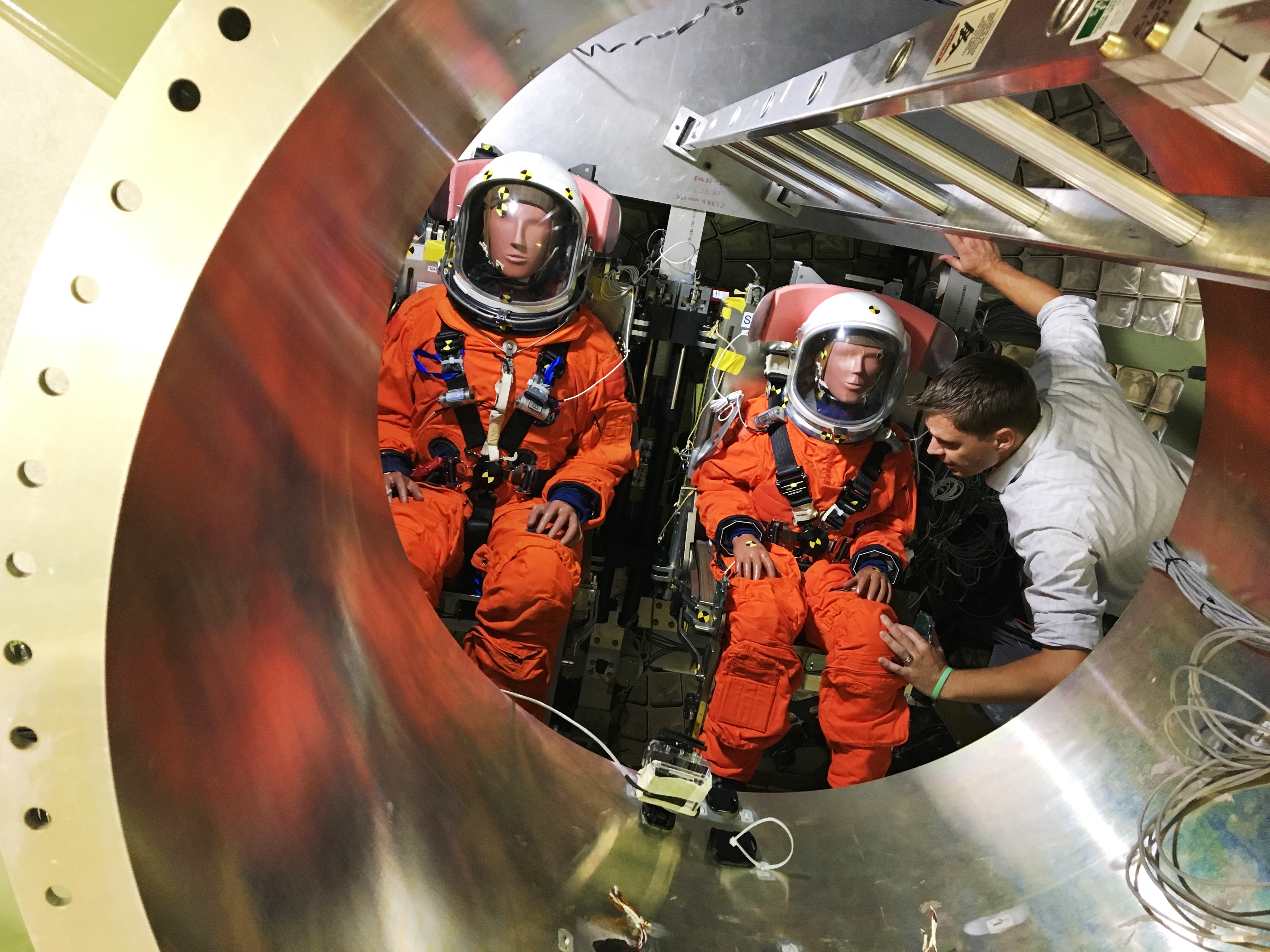Larry Price, Lockheed Martin Orion Deputy Program Manager, spoke with Lockheed Martin Space Communications about designing the crew capsule that will return astronauts to the Moon and eventually Mars.
LMSC: Why is a capsule the right form and function for crewed spaceflight, both in the Apollo era and on the Orion program?
PRICE: Perhaps a good place to start is to think about airplanes and why they look the same from the very beginning to now. They've advanced a lot, but they all have wings and tails.
Let’s extend that line of thinking to the capsule. At the beginning of the Orion program, we did about a thousand formal documented systems-engineering trade studies to design subsystems and systems, and the overall vehicle was one of those.
Early in the program, were trading off a capsule and a really, frankly, sexy winged, sharp edge vehicle. The analysis would say that a lifting body could aerodynamically come into the atmosphere at very high velocities, like returns from Mars and further out, and not use propulsion energy to slow us down, but use the aerodynamic, the atmosphere, to do aerobraking.
The trade of that vehicle was, you can imagine, looking like a very sexy hypersonic airplane. And is a lot more complex than a capsule in macro and micro localized aerodynamics and aero heating.
NASA was also in favor of the capsule, because there was data on the Apollo shape. And we at Lockheed Martin have flown the Apollo shape on for Stardust and Genesis and those kinds of interplanetary things that have come back to the Earth, but they are only about a meter in diameter.
So, on the vehicle, we don't have a lot of data on different shapes that's full-scale, and you can't extrapolate for size, because it doesn't extrapolate well. But Apollo had flown with the unmanned flights, and the low-altitude flights, and Apollo 13 without landing on the surface. The Apollo shape has done Earth Entry something like 15 or 20 times. And it's virtually the same size as we were.
It's just 10% or 20% bigger in diameter. So, there was a lot less risk associated with using the Apollo diameter – or what we call, the Apollo outer mold line.
While it looks like it's your grandfather's Apollo, it's based on engineering research that was done at the time, actual flight data of a vehicle roughly the same size – even with much-less-capable instrumentation systems than we have today and guidance, navigation, and control algorithms to be able to fly and trim the vehicle.
And if you went to an aerodynamic shape, with sharp leading edges and wings and things, there was a lot more unknown about what risks you'd run into designing that vehicle.
Then, on top of that, there's always this trade about sort of wings and wheels and parachutes, and trading the weight, because everything is velocity and energy to get to a velocity of Delta-V. At the most basic level, if you need to get to a high-enough velocity to get to another planet, it's the mass of the vehicle. So, like all spacecraft, they want them to be light. So, do you want to carry wings and wheels to land on the surface of the Earth, all the way to Mars and back? Or do you want to carry something lighter, that's a heat shield and parachute?
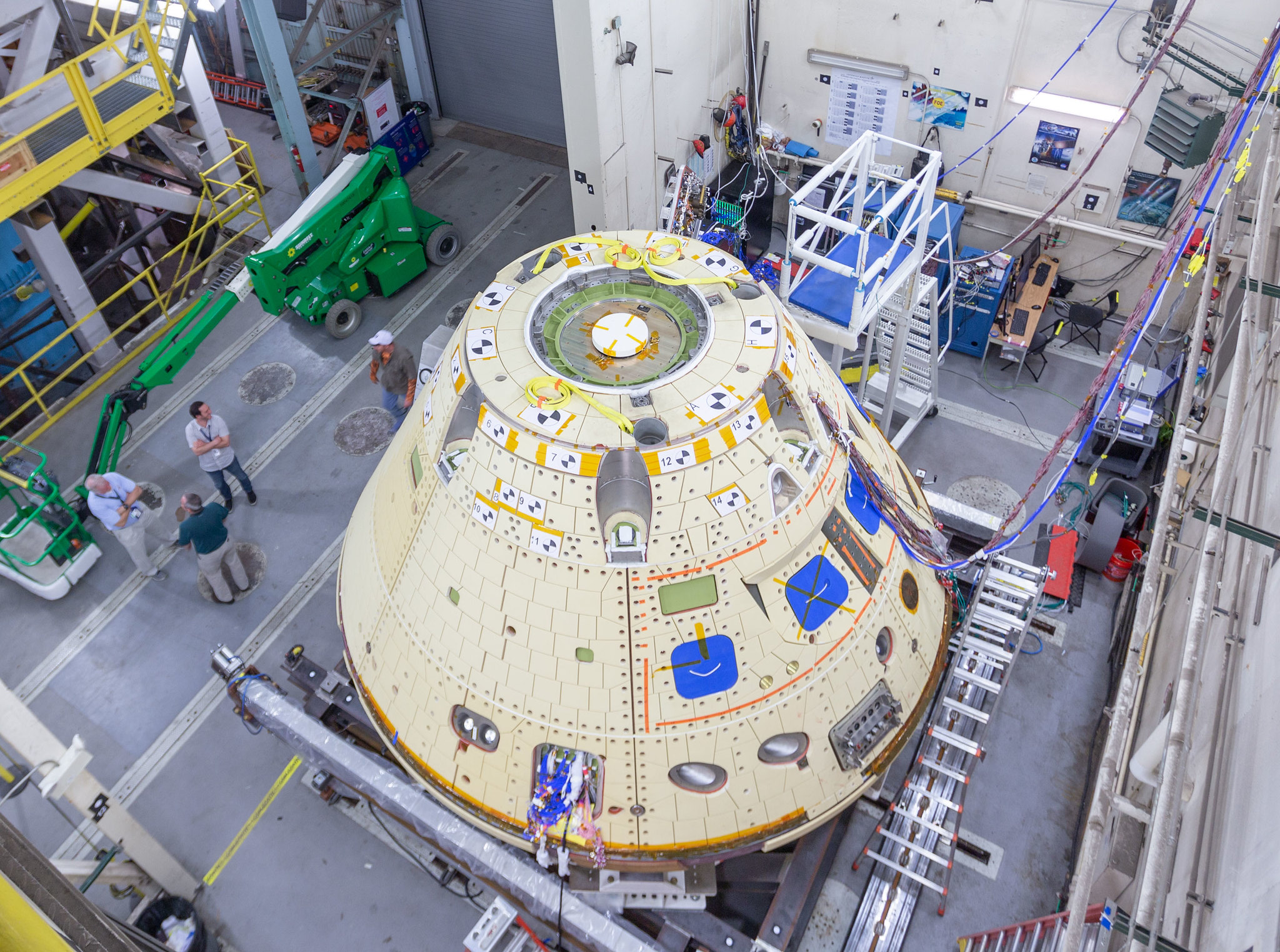
LMSC: As you say, the Apollo outer mold line is the same. But the capsule has certainly evolved technology-wise, yes?
PRICE: In the big picture, imagine that during the days of Apollo, NASA developed a lot of technology that never existed before, and some of the remarkable examples are digital computers.
The Apollo program flew with an analog computer and a very small digital computer. And the computer had very little memory because it was very cumbersome and large at the time of the technology.
Also, NASA developed this early computational capability. Apollo was designed with slide rules and flown. I think the number was something like a 100-kilobit memory in the flight computer on the lander. Now that we are flying with megabit of capability, so the system can do a lot more. In the early days, the capsule was just at the forefront of technology in where we were, in the '60s and '70s.
And now the whole aviation industry and information technology and computing capability and software has grown. And to the point where Apollo started out with developing this capability, we then, when we revisited it, we could then leapfrog all those generations and take advantage of what the aerospace community had developed over almost 50 years.
For example, the processors. When we started we were referring to it as the sixth generation of fault-tolerant avionics. And that was all developed in the aircraft industry with fly-by-wire and digital control capabilities to fly airplanes that didn't need to be aerodynamically stable anymore, because the computing capability could compensate for instabilities aerodynamically.
And then NASA could take advantage of all that work and apply it to what Orion would be doing. So, there's a whole story about how that evolution through multiple generations of the technology, we could then tap into at this end and then build on again.
Take software operating systems, like your desktop computer, and when you get the Blue Screen of Death and it crashes and you must reboot. Obviously, you can't tolerate that in a spacecraft as you're entering the Earth's atmosphere and you have no time to restart anything.
The flight software operating system is human-rated, just like the other systems – mechanical systems, propulsion systems, mechanisms, et cetera. So, the software needs to be human-rated, meaning that it will not inadvertently decide to stop for any unknown reason.
Going through all the testing to make sure that it has all these modes that will retain the capability. And so that operating system was developed for commercial airline use, operating and controlling fuel flow in engines and aerodynamic surfaces and things.
The human-rated operating system was in existence, and then all we had to do with NASA was transfer that into the deep-space environment, where it's different -- you're outside of the atmosphere, you're exposed to radiation and different environments -- and to just do the verification that that human-capable software was operating in that environment the way it does in the atmosphere.
There's a whole lot of pieces that are tied to what's been going on in the world for 50 years, in the real high-speed generation, maturation of technology...that NASA could tap into before we go do Orion.
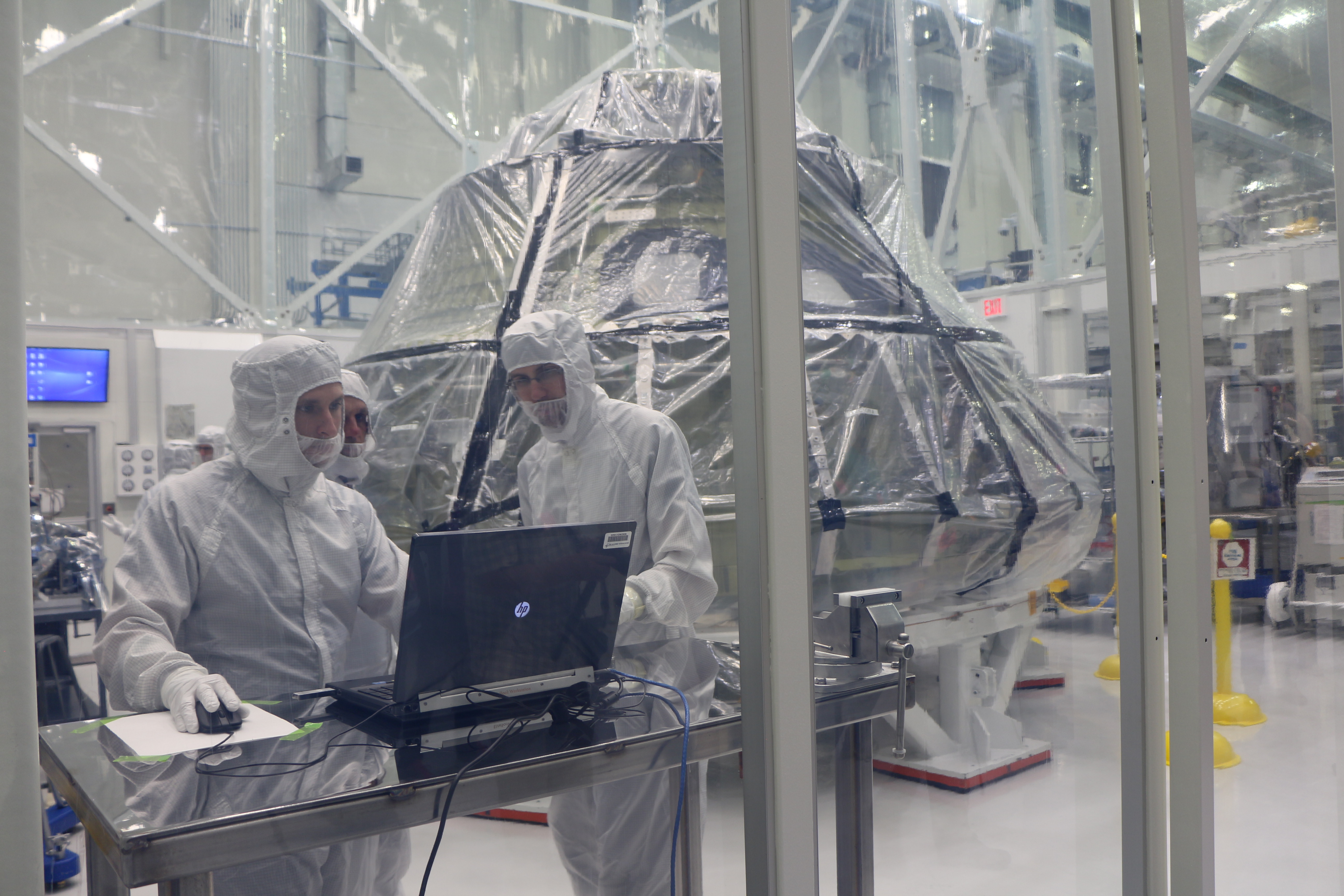
LMSC: You and your team are doing loads of research on building the capsule. How are the astronauts that will fly aboard Orion involved in that?
PRICE: In the Orion program, we have had the privilege of working with actual Apollo astronauts Some are still alive. Some have passed away in the last 10 years while we've been working on the program.
A great example is Gene Kranz - not an astronaut but a NASA Flight Director - who designed the whole architecture of how to manage the spacecraft during the mission.
Today, the Astronaut Corps – I think there are about 50 of them still at NASA - there are astronauts assigned to the program. When we are in engineering reviews and trade-study discussions and the program boards that are making decisions, there are representatives from the Astronaut Crew Office present.
And something that’s a bit unique - while we’re working together in Houston, they're all in the same community you're in, so you run into these astronauts in the grocery store or at church.
The crew is doing ingress and egress testing in the vehicle, in the Water Immersion Facility at NASA Johnson Space Center, where they’re floating in a capsule and practicing getting out in the water.
They're part of avionics displays and controls mockups and prototyping, where they're in the facility with very simple mockups but putting the displays with all the graphics that are on the displays and using the launch video and acoustics from our flight test in 2014 while they're playing with these different displays to operate the vehicle.
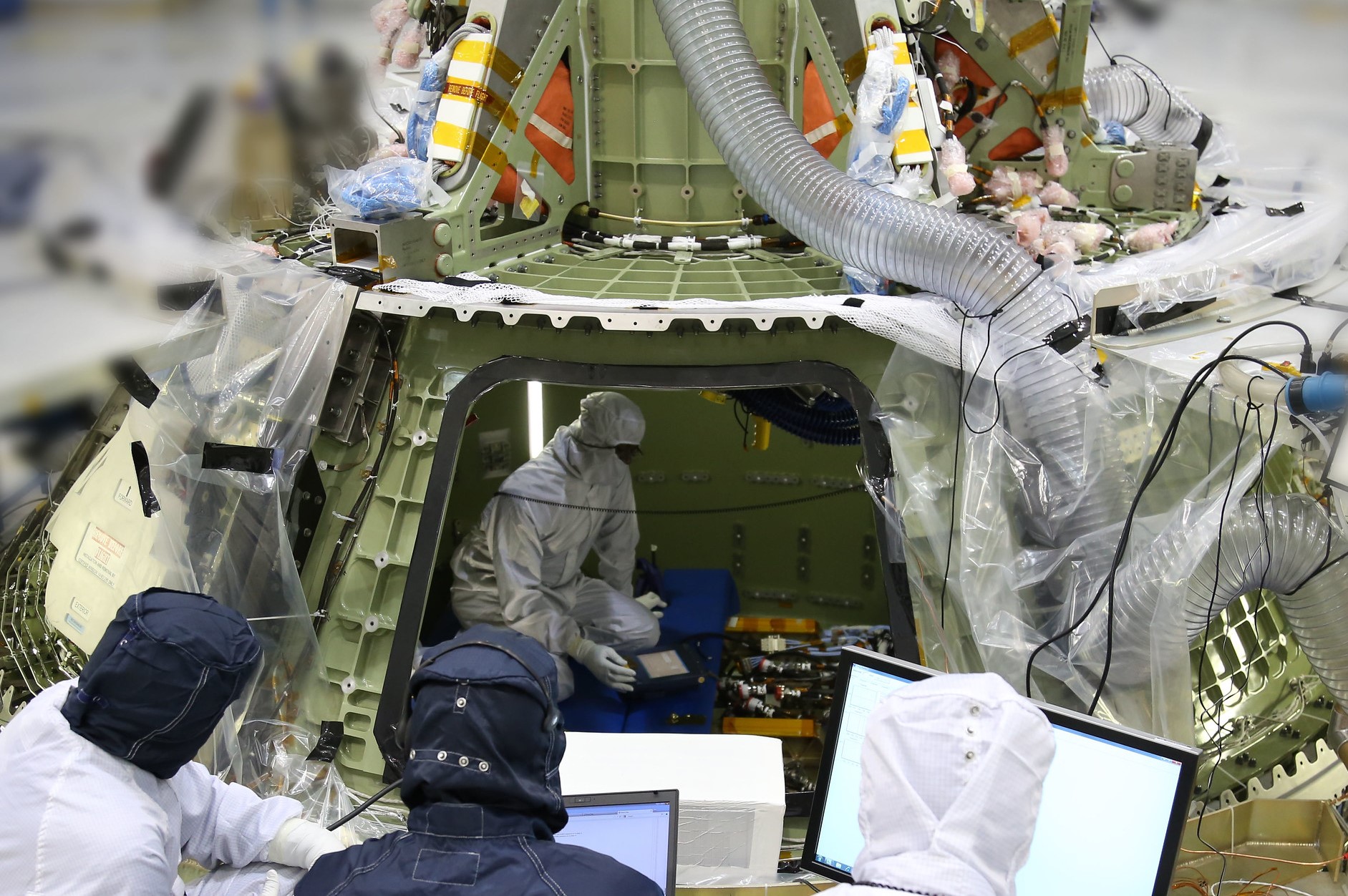
LMSC: Do you spend time inside the spacecraft to get firsthand experience, as well?
PRICE: Sure. Especially in a virtual environment, where you can put the goggles on and get immersed in anything from operating the vehicle, where the displays are and such, and assembling the vehicle.
And we have got cockpit mockups where you can practice docking and flying the vehicle with the displays and the Reaction Control System and its sort of handling qualities. That way, the engineers can know how the pilots, the users, are going to operate the vehicle.
Sometimes we have engineers experience the ascent environment, probably the most severe of the entire flight. And if they’re designing the seat, we put them in that seat and place mockup of the controls around them.
So, they're in the space suit that they're flying during ascent and entry, in a seat like the flight seat you're developing, with a helmet on and the microphone and all the controls. And then you put them in the random vibration environment of launch.
We’ve also put the engineer, who is a random vibration dynamicist whose job it is to predict these environments mathematically, on the shake table, experiencing what flight would be like before he wrote the mathematical algorithms about how to define the environment for the system, the capsule, to be able to survive that environment.
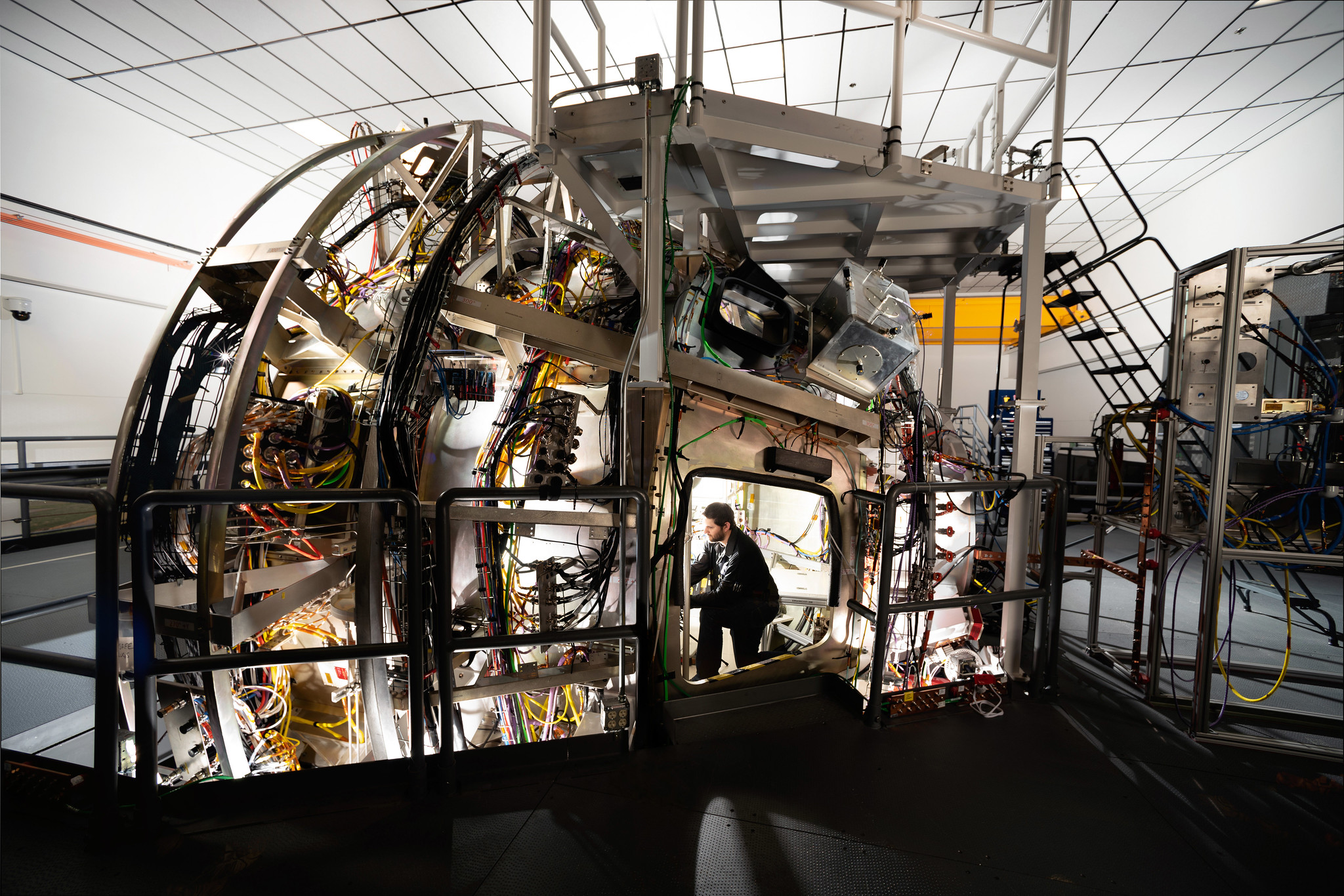
LMSC: How much of the population could potentially be eligible to fly on Orion, based on how it's built?
PRICE: We’re moving away from the early days of military test pilots who were chosen because they would be able to fly the machines, to the people who will have boots on the ground will be scientists and teachers, so that they can learn more from the surface.
The story I love is, in the Apollo program, it wasn't until the last flight, Apollo 17, that a scientist flew on a mission. Harrison Schmitt, when he flew - I got a chance to talk to him, to ask him if this was true - because he was a geologist, when he was on the surface of the Moon he noticed a rock that didn't look right. It was more orange than everything else. You think of the Moon as all being gray. The rock had sort of an orange tint to it.
Nobody ever told any of the military test pilots to pick up orange rocks. And he looked at it and he said, "I'm a geologist," and it didn't look right to him. And so that orange rock was one of the most important finds of the Apollo program. People have now been researching that rock for 50 years.
All that is to say, you want scientists in this user community. You want real diversity of capability in the men and women doing this work.
LMSC: What is life is going to be like for the astronauts who will eventually be living in these capsules for some very long interplanetary journeys. How many people does the Orion capsule fit? And how much time would they spend there, both for the upcoming missions and then the future?
PRICE: The capsule is designed for four - it could accommodate more if you were doing emergency missions and you needed to rescue people and bring them home.
But our primary requirements are around a crew of four. The timeline is that if we do these long missions that are going to be, like, to Mars, it's multiple years - three years to line up with the planet, transition out there for nine months, line up with the planets again. So, there will be other elements, modules, to the system – habitat modules and others – so there will be more room.
What we equate it to is if you're going on a camping trip and you have an RV, and you've got your little car in the back that you'll park the RV and then drive the car around where you're going. There will be a lot more accommodations, but still it's going to be cramped. It's like life in the Space Station.
There are long-duration experiments going on below the ocean surface -- not terribly deep, but deep enough that you're isolated -- and what all has been going on in the South Pole for decades, and in deserts and things, trying to get the physiological effects.
But there will be a lot of challenges to long duration. It's a harsh environment, the space environment. Radiation that you can't see, but when there is a solar event and you get it from instrumentation and then can maneuver into places in the vehicle to shield you from the radiation.
But then the Environmental Control System is much more capable than it was for Apollo. It can pull the moisture out of the air that you're generating when you're doing that exercise. The system has designed a lot more than just a camping trip to more of a long-duration capability.
The missions will be fascinating, to say the least.





